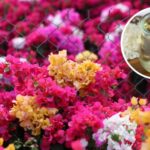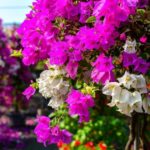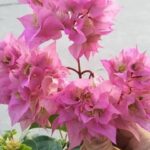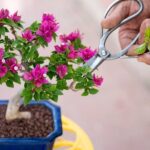Over-fertilizing your plants doesn’t always lead to an abundance of flowers. Bougainvillea, for instance, is a flower that doesn’t thrive with excessive fertilizer. In fact, the healthier and larger its leaves are, the fewer flowers it tends to produce.
A common misconception is that there are male and female bougainvillea plants, and only the females bear flowers. However, this isn’t the case, just like how there aren’t male and female papaya trees. If your bougainvillea isn’t blooming, try these tricks:
Use a girdling technique or tie the trunk with a string
Many people suggest that when a bougainvillea has too many leaves, you should restrict the nutrients from reaching them. One way to do this is by tightly wrapping a steel wire around the trunk. However, this method can be labor-intensive as it requires a lot of strength to tighten the wire.
Another approach is to use a knife to cut a ring around the trunk, just like girdling. This technique, known as “ring barking,” is often used by gardeners for fruit trees to stimulate flower and fruit production. By cutting a ring into the bark, you interrupt the flow of nutrients to the leaves. Try this on your bougainvillea by making a clean cut with a sharp knife, removing a half-centimeter ring of bark near the base of the trunk. You can also spray the plant with KNO3 (100g per 10 liters of water) to encourage earlier blooming. Disrupting the bark’s integrity will trigger a physiological response in the plant, stimulating it to flower and fruit.
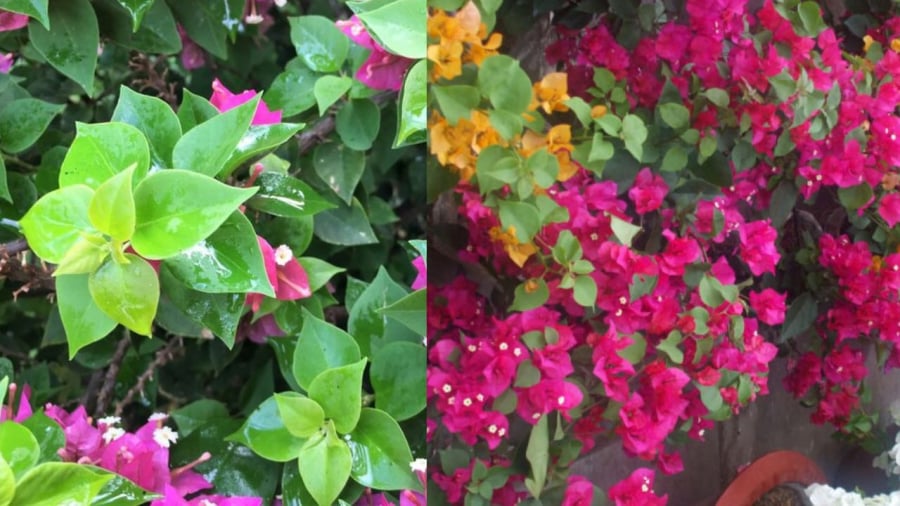
Lack of Blooming is Due to Improper Care, Not a “Male” Plant
Prune Leaves and Reduce Watering
Pruning leaves to leave only a few at the top of the branches is another way to control nutrient distribution. Experienced bougainvillea growers also employ a water restriction technique to encourage flowering. You can do this by temporarily stopping irrigation for about five days and then resuming watering. Alternatively, you can use a knife to cut some roots, reducing the nutrients that reach the leaves. Bougainvilleas thrive in slightly harsh conditions and respond well to root restriction. By cutting some of the roots, new roots will form, and the plant will be stimulated to flower.
Ensure Your Bougainvillea Gets Enough Sunlight
Bougainvilleas are native to warm regions, originating from Mexico, and they require ample sunlight to bloom. Place your potted bougainvillea in the sunniest spot possible, ensuring it receives at least six hours of sunlight daily. These tropical plants thrive in heat and sunshine, and the more sun they get, the more vibrant and abundant their flowers will be.
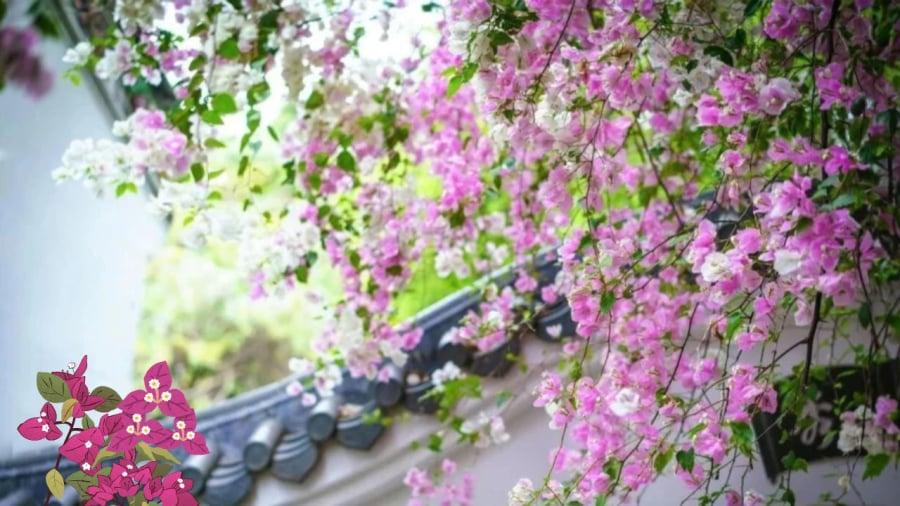
Proper Care Will Lead to a Vibrant Display of Flowers
Soil for Bougainvilleas
While bougainvilleas don’t have stringent soil requirements, there are some things to keep in mind for optimal growth and flowering. Bougainvilleas are positively phototropic, preferring warm environments with optimal growth temperatures between 18 and 28 degrees Celsius. For potted plants, a mixture of garden soil, well-rotted manure, leaf mold, and pine needle soil will promote rapid growth. Ensure the soil depth is sufficient to accommodate the plant’s root system for better health and flowering.
Re-evaluate Your Fertilizer Usage
Bougainvilleas don’t require frequent fertilization. In fact, overdoing it can lead to excessive leaf growth and a lack of blooming. If you’re watering daily and providing regular fertilizer, you may be overdoing it. Potted bougainvilleas don’t like waterlogged soil or excessive nutrients, as this will only promote leaf growth. Allow the soil to dry out completely between waterings, and ensure proper drainage. If you’re growing bougainvilleas in the ground and experiencing heavy rainfall during the summer, consider creating drainage ditches or planting on slightly elevated ground.
When fertilizing, use a balanced fertilizer once a month for in-ground plants. During the budding stage, you can apply dihydrogen phosphate or phosphor-potassium fertilizer. For potted plants, dilute the fertilizer to at least 500 times its concentration, as a higher concentration can burn the roots. Regular diluted fertilizer applications will promote healthier growth.
“The Ultimate Guide to Vinegar: Unlocking the Secret to Year-Round Blooming Glory for Your Bougainvillea”
The Bougainvillea will bloom profusely and all year round if you know how to care for it. This vibrant plant, with its vibrant hues of magenta, fuchsia, and purple, is a sight to behold and a true testament to your green thumb. With the right care and attention, you can enjoy a vibrant display that will be the envy of your neighbors.
The Reluctant Bougainvillea: Tricks to Get Your Vine Blooming
Bougainvillea is a vibrant and vibrant plant, with its bright and vibrant colors, it is a popular choice for home gardeners looking to add a splash of color to their outdoor spaces. This sun-loving plant is a year-round bloomer, provided it is cared for properly. With its vibrant hues and free-flowing growth, it is a versatile plant that can transform any garden into a vibrant, colorful paradise.


























